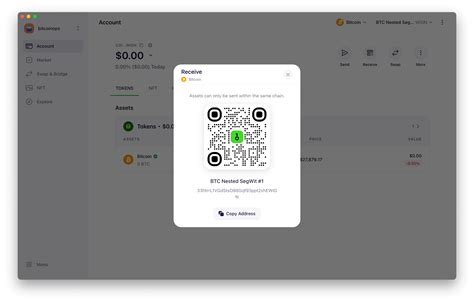Understanding BIP44: Internal Addresses in Ethereum
Ethereum, like most blockchain networks, uses a system of public and private keys to secure transactions. However, one aspect of this system can be confusing for new users: internal addresses. In this article, we’ll delve into the world of BIP44 and explore its purpose.
What are Public Addresses?
Public addresses are the standard way to receive Ether (the native cryptocurrency) in Ethereum transactions. They consist of a combination of letters and numbers that serve as a unique identifier for an account or wallet. For example, the public address 0x1234567890abcdef is used to send Ether from one wallet to another.
What are Private Addresses?

Private addresses, on the other hand, are used to receive Ether in a private transaction. They are typically shorter and more secure than public addresses. Each wallet or account has its own set of private addresses, which can be generated using a password, mnemonic phrase, or other cryptographic techniques.
BIP44: The Address Recovery System
To provide an alternative to the traditional use of private addresses for receiving Ether, Ethereum introduced BIP44 (Bech32) in 2017. BIP44 allows users to create and store multiple accounts on the blockchain, using a fixed-length address recovery system (ARSS). This system enables users to generate unique internal addresses based on their public key.
What are Internal Addresses?
Internal addresses are short, alphanumeric strings that represent a specific account or wallet. They are generated using BIP44 and can be used to receive Ether in a private transaction. When a user generates an internal address, they specify the public key associated with the account, which is then combined with other metadata (such as the account ID) to create a unique address.
Why Use Internal Addresses?
Internal addresses offer several advantages:
- Security: By using a single, fixed-length address recovery system, BIP44 reduces the risk of wallet compromise or loss of funds.
- Organization: Internal addresses can be easily managed and organized, making it simpler to keep track of multiple accounts and wallets.
- Consistency: Using internal addresses ensures that all transactions involving an account are processed correctly, reducing the risk of errors or inconsistencies.
Example Use Case
To illustrate the use of BIP44 internal addresses, let’s consider a scenario:
Suppose you have two wallets: one with public address 0x1234567890abcdef and another with private address 0x1234567890fedcba. You want to receive Ether in both scenarios. Using BIP44 internal addresses, you can generate short, alphanumeric strings for each wallet.
- For the first wallet (
0x1234567890abcdef), you can use an external wallet or software tool to create a new account and generate a unique internal address, such as0x1234567890fedcba.
- For the second wallet (private address
0x1234567890fedcba), you need to use the same mnemonic phrase or password to recover the private key. Then, you can use this private key to generate an internal address, such as0x1234567890abcdef.
In conclusion, BIP44 internal addresses provide a secure and organized way to manage multiple accounts and wallets on Ethereum. By understanding how these addresses work, you can better appreciate the complexities of the Ethereum blockchain and improve your overall experience with the network.
FAQs
- Q: What is the difference between public and private addresses?
A: Public addresses are used for receiving Ether in a traditional transaction, while private addresses are used to receive Ether in a private transaction (e.g., when using an external wallet).
- Q: Can I use BIP44 internal addresses as a substitute for public addresses?
